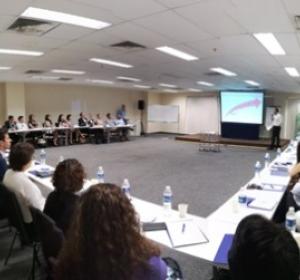On 29th November, FP&A Trends Group held the Singapore FP&A Board Meeting. Over forty senior finance practitioners discussed the challenges, trends and shared best practices in the FP&A field.
FP&A Insights
FP&A Insights is a collection of useful case studies from leading international companies and thought leadership insights from FP&A experts. We aim to help you keep track of the best practices in modern FP&A, recognise changes in the ever-evolving world of financial planning and analysis and be well equipped to deal with them.
Stay tuned for more blogs and articles from great authors.
There’s a lot of buzz nowadays with regards to digitalization and how we all need to be ready for significant changes in our working environment and businesses.
Ever notice how the personalities and dispositions of animals often resemble humans'? An organisation’s pursuit of adopting FP&A involves personalities of all types. How are they like the creatures that populate our planet? Here is a zoology of analogous types of employees that you might recognise.
Financial Planning is a process of thinking. One of the end results from this process is a product called a budget. A budget is a product that expresses thoughts. As a product a budget must be created and its creation must have a foundation. The foundation for creating a budget is answers to three basic questions.
Pagination
Subscribe to
FP&A Trends Digest

We will regularly update you on the latest trends and developments in FP&A. Take the opportunity to have articles written by finance thought leaders delivered directly to your inbox; watch compelling webinars; connect with like-minded professionals; and become a part of our global community.




 Siva Raj Jeyarajah is based in Kuala Lumpur, Malaysia, and is the Head of the Finance, Methods and Risk Management Department of Maybank’s Group Operations Division. Siva Raj is a qualified Accountant and holds the ACCA qualification and the CPA certification, including a BSc (Hons) from the National University of Malaysia. He is also a member of the Malaysian Institute of Accountants (MIA) and a fellow of the Association of Chartered Certified Accountants (UK).
Siva Raj Jeyarajah is based in Kuala Lumpur, Malaysia, and is the Head of the Finance, Methods and Risk Management Department of Maybank’s Group Operations Division. Siva Raj is a qualified Accountant and holds the ACCA qualification and the CPA certification, including a BSc (Hons) from the National University of Malaysia. He is also a member of the Malaysian Institute of Accountants (MIA) and a fellow of the Association of Chartered Certified Accountants (UK).


